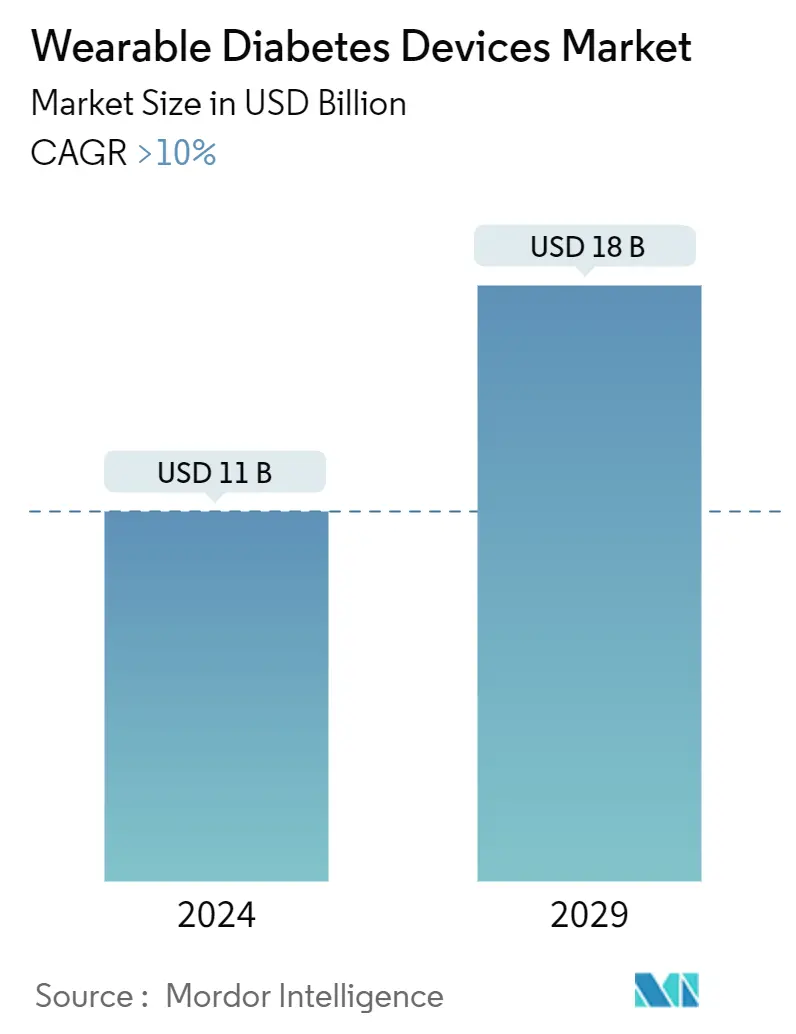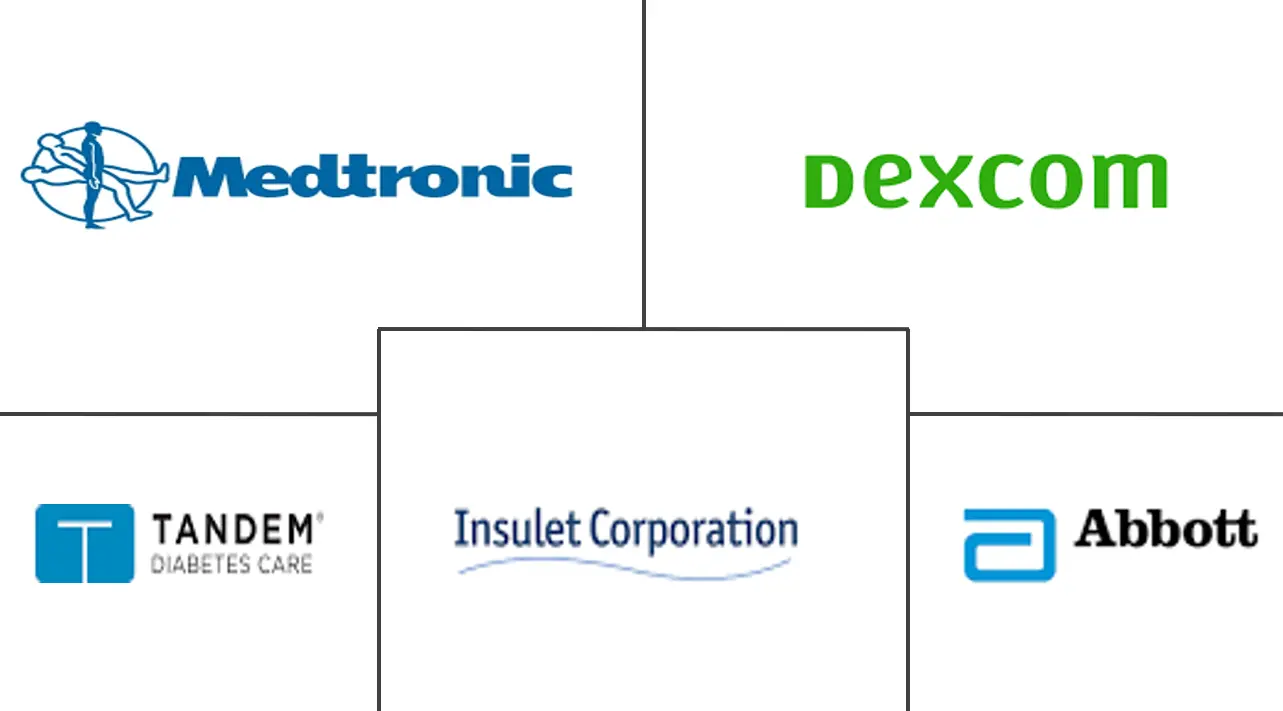Market Size of Wearable Diabetes Devices Industry

| Study Period | 2018-2029 |
| Market Size (2024) | USD 11 Billion |
| Market Size (2029) | USD 18 Billion |
| CAGR (2024 - 2029) | > 10.00 % |
| Fastest Growing Market | Asia Pacific |
| Largest Market | North America |
Major Players
*Disclaimer: Major Players sorted in no particular order |
Need a report that reflects how COVID-19 has impacted this market and its growth?
Wearable Diabetes Devices Market Analysis
The Wearable Diabetes Devices Market size is estimated at USD 11 billion in 2024, and is expected to reach USD 18 billion by 2029, growing at a CAGR of greater than 10% during the forecast period (2024-2029).
Due to their convenience, ability to provide real-time data, and potential to improve glycemic control, wearable devices for diabetes management are becoming increasingly popular. These devices offer a variety of features, such as:
CGM devices are designed to measure glucose levels in the interstitial fluid, which is the fluid that surrounds the cells, every few minutes. This information is then transmitted to a smartphone or other device, providing real-time data about glucose levels. By using CGM, individuals with diabetes can make more informed decisions about their insulin dosage and lifestyle choices.
On the other hand, insulin pumps are devices that deliver insulin to the body in a precise and controlled manner. They can be programmed to administer different basal (background) and bolus (mealtime) insulin doses. Insulin pumps are a viable alternative to multiple daily injections of insulin.
Wearable devices designed for diabetes management offer a range of potential advantages, which include:
Enhanced glycemic control: These devices provide real-time data on glucose levels, enabling individuals with diabetes to make more informed decisions regarding their insulin dosage and lifestyle choices. Consequently, this can result in improved glycemic control and a decreased risk of diabetes-related complications.
Increased convenience: By being wearable, these devices make it more convenient to monitor glucose levels and manage diabetes. This is particularly advantageous for individuals leading busy lifestyles, as it simplifies the process of diabetes management.
Heightened motivation: Wearable devices provide feedback and support, serving as a source of motivation for individuals with diabetes to effectively manage their condition. This encouragement can contribute to better adherence to treatment plans and overall disease management.
Alleviated self-management burden: Automation capabilities of wearable devices, such as insulin delivery and blood glucose monitoring, can alleviate some of the responsibilities associated with self-management for individuals with diabetes. This reduction in burden can enhance the overall experience of managing the condition.
The market for wearable devices for diabetes management is being driven by the numerous benefits they offer.
